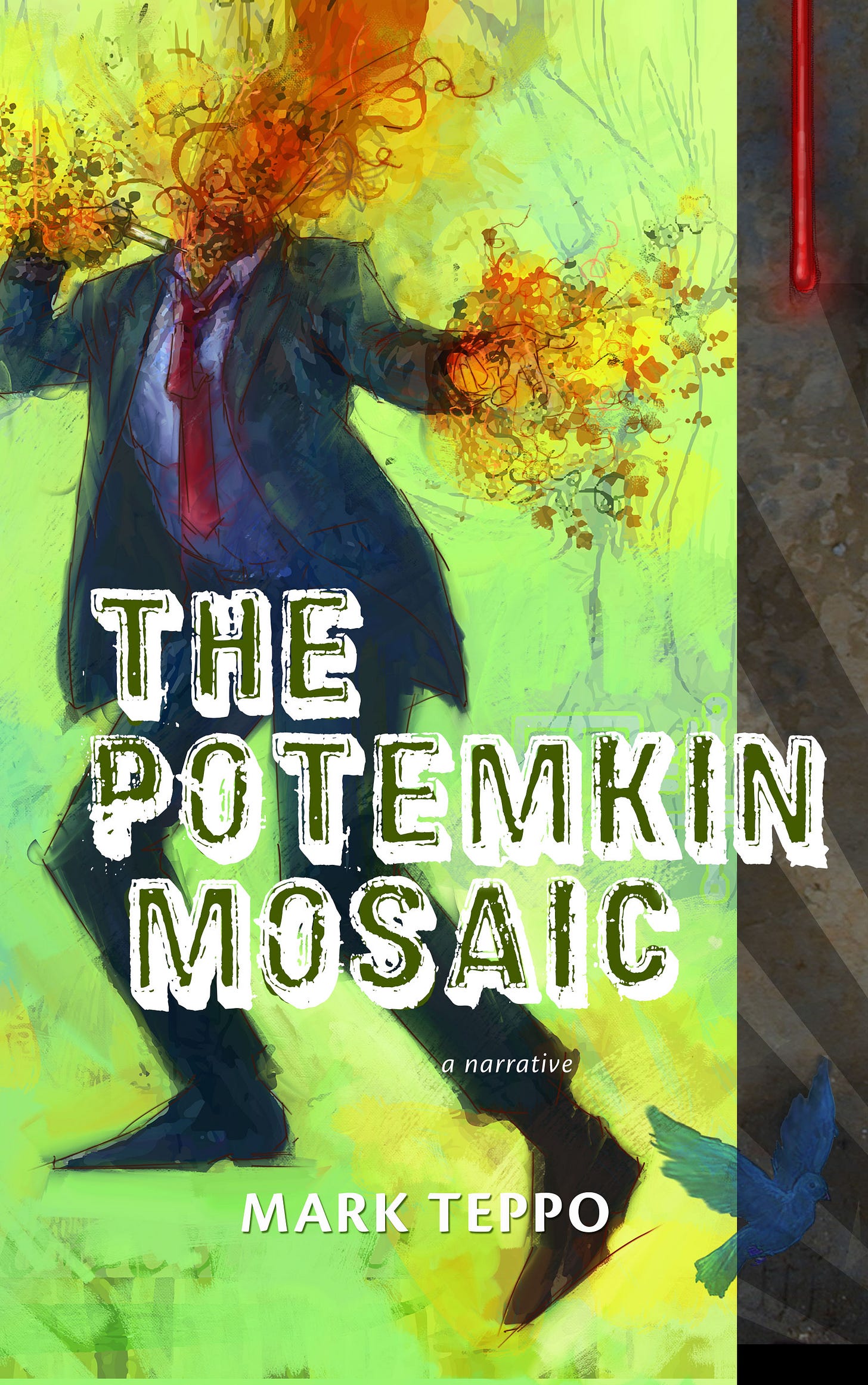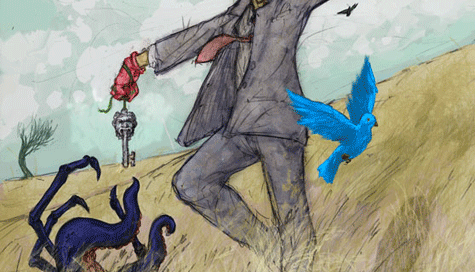Once upon a time, I finished writing my second novel. It was a horrendous experience. I think I wrote five full drafts of that book, because I didn’t like editing. As soon as I started to pull apart early chapters, they would invalidate later chapters. Why bother mucking around with cutting and pasting and changing every third word when it should be easier to type out a new version. Right?
Silly boy.
I did finally finish that book, and the end result was—mostly—in line with where I started, but man, the process of getting from idea to completed text was very inefficient. I needed to get better at a) planning, and b) trusting myself.
Around this same time, Darin Bradley was thinking about starting up an online project, a collection of the weird. It was going to be called Farrago’s Wainscot, because why not? Weird will weird. He reached out and asked if I wanted to contribute something.
I had been thinking about this crisis of confidence, as well as noodling around with some flash pieces and the idea of something that would reference and reveal some subtext around words I used regularly in stories. Some kind of hypertextual thinger or another.
“Sure,” Darin said. He was always a sucker for stuff that got meta about thinking and being and thinking about being.
And so, I poked around in the Drawer of Ideas and found a story about a black market psychotherapist. I had written it for another site called OPi8, and it was the story about a guy who helps people by inserting himself into their dreams so he can fix them in a way that their conscious minds can’t.
“What if this black market oneiromancer—” I said to Darin.
“A what?”
“A dream doctor.” I explained. “He, you know, slips into your dreams and fixes things that you don’t know are wrong. So, this guy wakes up one morning and is pretty convinced he’s been edited. But because it happened on a dream level, he doesn’t know what he doesn’t know, you know?”
“Not really,” Darin said. “But continue.”
“So I’ll write a series of pieces that are him writing down his dreams, and in addition to these dreams, we’ll have a lexicon of key words—with discussion—that will be the record he’s building to discover who has been editing him and why.”
“And how long with this thing be?”
I shrugged. “I dunno. Maybe twelve dreams? We can serialize it.”
“Sure,” Darin said. “Why not?”
And so, every month for that first year of Farrago’s Wainscot, we put up another dream, along with another batch of keywords in the lexicon. And every month, we reindexed the entire thing with these new keywords. Which meant, when you came back to read it again, there would be new links to follow.
That was it. That was all the planning we had at the beginning. Twelve months later, and God knows how many hours spent touching and retouching the same fucking HTML files, The Oneiromantic Mosaic of Harry Potemkin was done.
I nailed the ending by the way. Which totally demonstrated item b) from above. I totally failed at item a), but whatever. We had built a thing.
And, in the end, it’s a little over 100,000 words of hypertext narrative that eats its own tail several times.
The Farrago’s Wainscot archive went kaput a few years back, which meant the original iteration of the Mosaic was gone. I rebuilt it elsewhere, and that persisted for awhile, but it was a thing that gave you no clear way to enter, offered you no clear route to follow, and refused to offer up a resolution. You experienced it, and what you thought of it was, well, that was for you. Harry didn’t care.
For those who have followed along so far, here’s a cookie: psychobabel.net.
I could say that I’ll wait here for you, but that’s a lie. I know you won’t be back for awhile. It is a lot of words.
Anyway, you can’t replicate the original hypertext experience in a print format. I thought about it a lot over the years. You can’t even do it with an ebook, mainly because you can’t go “back” in an ebook. The Mosaic was meant to be stumbled through—forward and backward—as you saw fit. Print and ebook were entirely a “go to the next page” experience. It was problem that didn’t have a solution—didn’t really need a solution, in fact, because you could read The Mosaic online. There were other things to do.
Ah, but I wanted a print edition. I liked the feel of a print edition. And so, I figured out a way to make a print edition.

It’s a different experience. It assumes some things about the reader (one of which is that you’ve already experienced The Mosaic in some fashion). It’s no longer a series of dreams with a lexicographical spine. There are sidenotes. There are footnotes. Some of these have become an argument between Harry and his pursuers. There are a variety of keys that craft a matrix around the text. The final letter, which upended the original hypertext narrative, is now introduced as a more discrete document within the text. There is an ending (such as things might exist within the dream), and there is a thirteenth dream, because Harry is still fighting Trinity Pharmacopoeia.
You can order the print edition at your local bookstore or via the standard online retailer options. [ Bookshop.org | AMZ ] 1
And speaking of games being played, my story in the upcoming Winding Paths anthology from Demagogue Press is called “The Fool’s Gambit.” It is, for those who have traveled this far with me, yet another dream of Harry’s. The Fourteenth Dream, perhaps.
A release party for Winding Paths is happening on December 10th at Board Bard Games in Portland, OR. You can find more information about the event here.
Full disclosure: That AMZ link is an affiliate link. Plan accordingly.







Still the pinnacle of hypertext for me. An investigation that embroils the reader in investigating wtf is going on. Absolutely majestic. A story deserving of more love than it receives.
The Mosaic sounds cool. Maybe a mix between House of Leaves and Dictionary of the Khazars? Will order a copy when I’m back home.